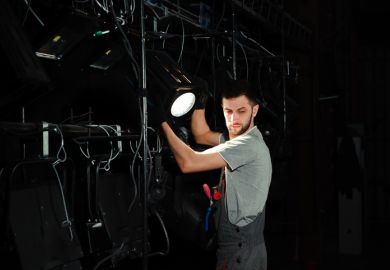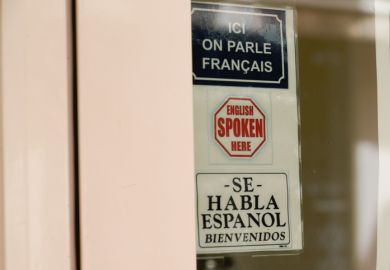Anxieties about the state of the modern world are demonstrating the “resilience” of ideas from the past that remain powerfully relevant today.
That was among the key points to emerge from an event on “resilience, resistance and research” organised by the London Arts and Humanities Partnership, a consortium of London universities funded by the Arts and Humanities Research Council to provide training for postgraduates.
At their annual research day in May, they had identified “resilience” as a key theme to explore, so last week’s discussion looked at what this might mean for research and practice in architecture and the arts today.
During the discussion, Jonathan Hill, professor of architecture and visual history at the Bartlett School of Architecture, University College London, examined “the resilience and evolution of ideas and practices”. Citing architectural historian Vincent Scully’s claim that “the architect builds visible history”, he noted that “architects have used history in different ways, whether to indicate their continuity with the past or departure from it”.
Such a sense of building on the past, in Professor Hill’s view, was equally relevant to addressing urgent current challenges.
Although “anthropogenic climate change was not widely acknowledged by scientists until the mid-1970s”, there was a much longer history of “lyrical environmentalism” and “poetic and practical responses to atmospheric pollution”, he noted. As early as 1661, John Evelyn’s Fumifugium was “proposing the relocation of coal-burning trades beyond the city, which would be edged with a forest of fragrant trees and shrubs”.
Peg Rawes, programme director of the MA in architectural history at the Bartlett, described how the concept of “humane ratios” developed by the 17th-century Dutch philosopher Spinoza in his Ethics could still provide important insights for coping with today’s housing crisis – yet another striking example of “how history can empower us and help us engage with current concerns”.
Meanwhile, artist David Cross, reader in art and design at the University of the Arts London, who has long been interested in “socially engaged practice and sustainability”, pointed out that we live in a time of “anxiety about socio-economic collapse”, where many of the doomsday scenarios predicted in the 1972 book The Limits to Growth seemed to be coming true.
He said that although our only hope was to “create an image of modernity which is not only more resilient but sustainable”, our efforts were often “undermined by accelerating inequality of wealth” and the many assets once in public ownership that had been sold off during recent decades.
Ironically, during the discussion – part of the wide-ranging Fabrication: Arts & Humanities Festival at King’s College London from 12 to 23 October – the audience’s own resilience was severely tested by a fire alarm and temporary evacuation from the building.
POSTSCRIPT:
Print headline: ‘Resilient’ ideas from the past can help build a sustainable future
Register to continue
Why register?
- Registration is free and only takes a moment
- Once registered, you can read 3 articles a month
- Sign up for our newsletter
Subscribe
Or subscribe for unlimited access to:
- Unlimited access to news, views, insights & reviews
- Digital editions
- Digital access to THE’s university and college rankings analysis
Already registered or a current subscriber?




